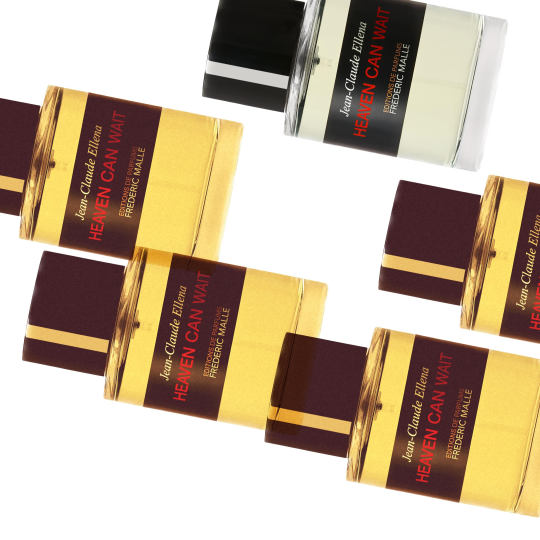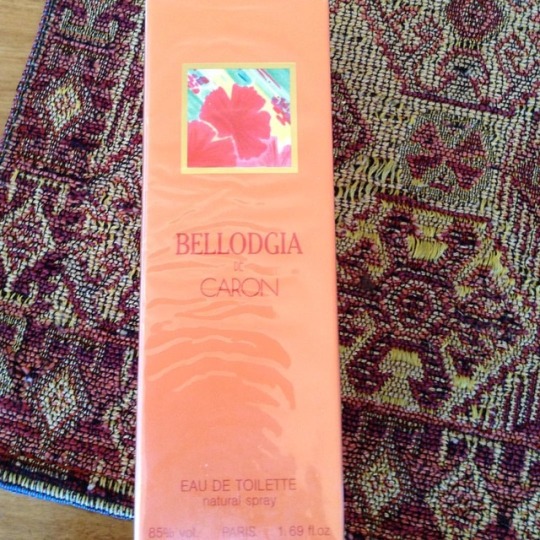#bellodgia
Photo

Donna Mitchell in a Bill Blass dress for Bellodgia perfume, 1969 (published in Vogue magazine)
#donna mitchell#60s model#vintage vogue#1969#swinging sixties#swinging london#bill blass#bellodgia#caron#vintage ads#60s icons#60s fashion
11 notes
·
View notes
Text
Frederic Malle Heaven Can Wait Review - Jean-Claude Ellena; 2023
Brand new from Frederic Malle and Jean-Claude Ellena: the retro-loving #HeavenCanWait.
It is to his credit that Frederic Malle continues to make us wait a whole year between new releases: he could so easily have given in to the temptation to churn out a half-baked creation every few months or so. And funnily enough, the passage of time is alluded to in his latest piece of work, Heaven Can Wait, created by the man behind some of his most memorable scents, Jean-Claude Ellena. Here’s…

View On WordPress
#2023#Bellodgia#carnation#Caron#classic#clove#Estee Lauder#feminine#Frederic Malle#Heaven Can Wait#iris#Jean-Claude Ellena#Love At First Scent#masculine#pepper#perfume review#Poivre#retro#unisex#video#vlog#vlogger#YouTube
2 notes
·
View notes
Text

Bride’s Magazine, 1996.
Model: Bellodgia Williams.
31 notes
·
View notes
Text
Serge Lutens Vitriol d’Oeillet

Nose: Christopher Sheldrake
notes: carnation, clove, pink pepper, nutmeg, lily, paprika, ylang-ylang, wallflower
Supposedly this is a "fierce" take on the gentle carnation, but let's be real, carnation is a soft scent, and there's nothing wrong with that. Vitriol d'Oeillet is all carnation, all the way through, with a lovely monochrome palette of peach-and-rust ranging from lotion-y delicacy to spicy sparkle.
It does feel crisper and more modern than century-old carnation classics like Bellodgia (which has a very old-fashioned heavy aldehydic top note). There are subtly overlapping facets -- a touch of warm nutmeg, a whiff of the realistically cloves-like spicy scent of real stock flowers -- and an overall soft creaminess from ylang-ylang.
Carnation scents are still criminally underrated. Carnation's subtle warmth makes it perfect for unisex, gently spiced, "my skin but better" personal auras -- perfume for people who don't like screechy "perfumeyness". Vitriol d'Oeillet is my favorite thus far. Not much vitriol to be found here, but plenty of finesse.
2 notes
·
View notes
Note
Do you have thoughts on Caron? I have vintages of Bellodgia, Farnesiana, Narcisse Noir, Nuit de Noel, and Parfum Sacre - I’m planning to have a Caron week this week 😇
i love caron i wish i was in ur house so i can do caron week too 🤧🤧i’ve only tried really old dusty bottles of narcisse noir and nuit de noel
4 notes
·
View notes
Text

Donna Mitchell in a Bill Blass dress for Bellodgia perfume, 1969 Vogue
0 notes
Video
Caron’s marvellous carnation: Bellodgia.
0 notes
Text

There are many types of altars. Here's one of mine.
#tis peony season#pyramid shapes#make delight wherever we are#peonies#i m pei#louvre pyramid#an ancient shape reimagined + set inside an old museum#louvre museum#tickle our senses#bellodgia#earrings#that beautiful vase#note from daughter c: because when you stop + look around life is pretty amazing
5 notes
·
View notes
Photo

Bellodgia SOLD!!! I have one bottle left in my shop Link in bio 😉 #vintageperfume #perfume #bellodgia #sold #scent #vintageshop
2 notes
·
View notes
Photo

Bellodgia
Caron, 1927
1 note
·
View note
Text

Ad for Caron's Bellodgia perfume in the January 1930 French Vogue.
(source: Gallica)
4 notes
·
View notes
Note
L'air du temps by Nina Ricci?
Classical, loverly, insouciant: adorable since 1948!
Nina Ricci, born Maria Nielli in Turin in 1883 (on the 14th January, day of Saint Nina), immigrated in France at age twelve, moving from town to town until she commenced her apprenticeship in Paris to become a seamstress. She didn’t know how to draw and made all her dresses directly on the mannequin, but she was talented, and in 1908 she was hired as a stylist by a fashion house of excellent repute, working her way to a position as an associate to the founder and main couturier, so that the name of the house became Raffin & Ricci—she had married Luigi Ricci in 1904, the son of a jeweller, and their son Robert was 3 when Nina entered Maison Raffin. However, in 1929, Monsieur Raffin died, and Nina Ricci closed the house for good, electing to retire. That is, until her son left his job as a publicist to open for his mother her own fashion house in 1932. Nina dealt with the couture part, Robert ran the business, but it was he also who launched the perfume collection—with Cœur joie, concocted by one of the very first female perfumers, the great, brave and bold Germaine Cellier—in December 1945.
L’Air du Temps was born three years later, in a time when fashion reflected a sort of general exhilaration amongst the recently-liberated population, even though the postwar period had its own hardships. France was destroyed just as much by Allied strategic bombing than by German ones and the country was being rebuilt, the industry modernised—Europe’s development was stalled by the two world wars, whilst the United States advanced steadily—and in France the temporary government led by General Charles de Gaulle imitated the American New Deal, nationalising a large part of the industry, implementing a planned economy, and thanks to powerful unions (Americans usually believe that they won WWII for everybody but in reality, the communists did quite a lot), other types of victories were won, such as the 1946 Social Security. In the midst of all that buzzing activity began a period referred to by later historians as ‘the Glorious Thirty’ (les Trente Glorieuses), and business went booming both for the French birth rate and for the fashion industry...
L’Air du Temps translates as ‘the air of the time’, part of a phrase that means one lives with one’s times; to ‘be in’ that air is to be fashionable. But that title conjures up also images of airy things, flight and freedom, as illustrated on the initial stopper, where Spanish sculptor Joan Rebull, who designed the first bottle, engraved a flying dove. In 1951, Marc Lalique (the son of prestigious crystal sculptor and jeweller René Lalique, a figure of the Art Nouveau period and a pioneer in designing beautiful perfume bottles), who had conceived the bottle for Cœur Joie, collaborated with Nina Ricci to redesign the bottle and created perhaps the most famous perfume flagon ever made, and certainly one of the most beautiful:

L’Air du Temps too is beautiful. It is an absolutely luminous perfume, light and cheerful, elegant and sophisticated yet good-humoured, never superficial, friendly, a little bit daring, at the same time youthful and timeless, with a retro vibe that comes from the powdery orris root and the spicy carnation, adding warmth but also a little foxiness to the mix. It is a floral, a giant bouquet at that, but so well blended and so tastefully arranged that the rose, ylang and violet simply add their impressionistic touches but never overpower; the star of the juice remains the falsely-simple carnation, the spiciest of flowers—its natural scent is due for a large part to eugenol, the molecule responsible for the very peculiar smell of cloves. In perfumery, one typically recreates the scent of a carnation using lots of eugenol, balsamic notes (preferably cinnamaldehyde), rose, ylang, heliotropin (named after the ‘cherry pie’ notes found in heliotrope flowers, i.e. sunflowers), powdery iris (orris) root, maybe a little vanilla... You get the picture: L’Air du Temps is, indeed, a carnation scent.
The downside of this delightful recipe is that the ever-abominably frustrating IFRA, the International Fragrance Association, has greatly limited the use of eugenol in perfumery, down to 0.5% maximum (although toothpaste may contain up to 4.3%...), because of the potential risk of accrued skin sensitivity for people with allergies. A vastly overestimated risk, in reality, but there are very powerful lobbies in Brussels and the European Union, which has made the fabled precautionary principle statutory, doesn’t make a difference between perfumery, cosmetics and, say, life-threatening pesticides used in industrial agriculture. The E.U. therefore is terrified of oakmoss. To the detriment of all perfume lovers.
Still, L’Air du Temps managed, somewhat miraculously, to remain true to itself despite the imposed reformulations. It has lost in power indeed, in opulence perhaps, its staying power, predictably, has waned; but it still is just as loverly as it was in its youth. Most mirthful carnation ever! And especially exhilarating to me today because there aren’t that many carnations in contemporary perfumery—not just because of IFRA regulations, mind you, but because current women’s fashion is all about synthetic fruit with sticky praline notes and a hefty dose of tart patchouli, or transparent, nondescript florals. Carnation love peaked in the Interwar period, notably thanks to perfumer Ernest Daltroff, founder of house Caron (where men’s perfumery was invented, basically) who loved carnation and used it in several great perfumes of the Twenties, chiefly 1927 Bellodgia, but L’Air du Temps visibly inspired a few notable fragrances of the 60s–80s (including the wondrous Opium, in 1977). After that, it nearly vanished from perfumes altogether... until the 2010s, as a matter of fact, when Serge Lutens released Vitriol d’Œillet in 2011, the cloviest of carnations, and assumedly started carnation’s new career. It still isn’t fashionable, but it’s damn chic, and featured in remarkable fragrances, especially in niche perfumery.
9 notes
·
View notes
Photo

Stunning display! #Repost @callidus_agency with @repostapp ・・・ Excited to finally get these vintage fashion prints framed and hung at the office! #Chanel #dior #hermes #pierrecardin #lancome #bourjoisparfume #bellodgia (at Dallas, Texas)
0 notes
Text

WWD, 1992.
Model: Bellodgia Williams.
51 notes
·
View notes
Text

Caron Bellodgia
Nose: Ernest Daltroff
notes: carnation, rose; jasmine, violet, lily of the valley; clove, vanilla, sandalwood, musk
Bellodgia is the canonical vintage carnation scent. It goes on brilliantly aldehydic and even lemony; then settles into powdery-musky fluff. Dusty-terracotta-blush with a crystalline lemon top.
It’s a graceful, soft, skin-like scent, pleasant but without much drama. There’s a lot of subtle textural complexity: a creamy lotion feel, breathy florals, faintly dusky shadows.
10 notes
·
View notes
Text
Caron Bellodgia Parfum Винтажный

#доставкапоукраине#интернетмагазин#продам#киев#распродажа#винтажнаяпарфюмерияссср#нишеваяпарфюмерия#парфюм#селективнаяпарфюмерия#парфумкашоп#parfumkashop
0 notes